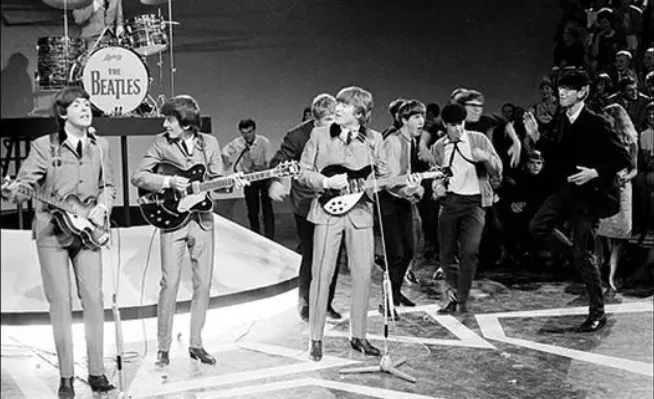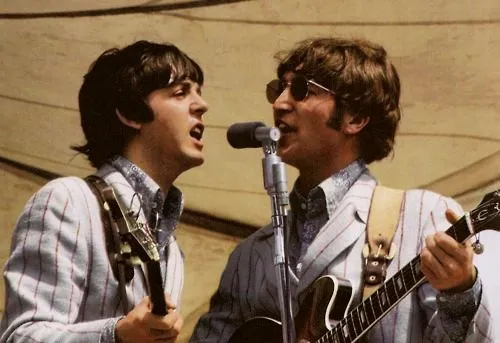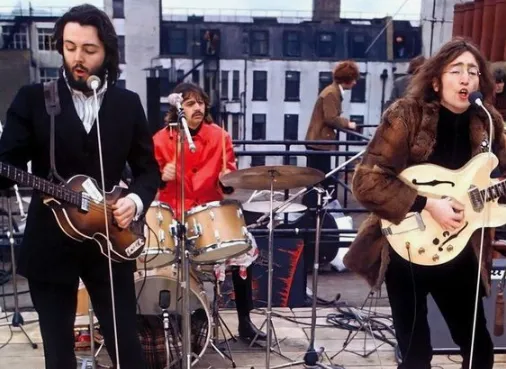About the song
(Watch the video below)
In the kaleidoscope of The Beatles' unparalleled discography, few songs shimmer with the same enigmatic allure as "Come Together." Released as the opening track of their seminal album "Abbey Road" in 1969, this mesmerizing composition stands as a testament to the band's boundless creativity and enduring legacy. With its hypnotic groove, cryptic lyrics, and infectious melody, "Come Together" transcends the boundaries of time and genre, inviting listeners on a journey into the heart of the human experience.
At its core, "Come Together" is a song of unity—a rallying cry for individuals to set aside their differences and join together in harmony. From its opening bars, propelled by Ringo Starr's thunderous drumbeat and John Lennon's soulful vocals, the song exudes a sense of urgency and purpose. With each verse, Lennon weaves a tapestry of imagery and symbolism, inviting listeners to embrace the transformative power of collective action.
Yet, amidst its message of unity, "Come Together" also brims with ambiguity and intrigue. The lyrics, laden with cryptic references and double entendres, invite interpretation and speculation. From the enigmatic opening line—"Here come old flattop, he come grooving up slowly"—to the surreal imagery of "juju eyeballs" and "holy rollers," the song dances on the edge of meaning, teasing the listener with its elusive secrets.

Part of the song's enduring appeal lies in its adaptability—a quality that has allowed it to resonate across generations and cultures. From political rallies to sporting events, "Come Together" has served as a rallying cry for unity and solidarity, its infectious rhythm inspiring crowds to join together in celebration and defiance. Its timeless message of inclusivity and empowerment continues to resonate with listeners of all ages, offering a beacon of hope in an often divided world.
The recording of "Come Together" at London's Abbey Road Studios was itself a testament to The Beatles' unparalleled chemistry and collaborative spirit. With George Harrison's searing guitar riffs and Paul McCartney's understated bassline providing the perfect counterpoint to Lennon's gritty vocals, the song took on a life of its own—a sonic tapestry that transcended the sum of its parts. Producer George Martin's innovative production techniques added layers of depth and texture, transforming "Come Together" into a sonic masterpiece that continues to captivate listeners to this day.

But perhaps the most iconic element of "Come Together" is its infectious groove—a hypnotic rhythm that propels the song forward with irresistible momentum. Ringo Starr's drumbeat, with its distinctive shuffle and syncopation, forms the backbone of the track, driving the music forward with a primal energy that is impossible to resist. Combined with McCartney's pulsating bassline and Harrison's shimmering guitar fills, the rhythm section of "Come Together" creates a mesmerizing sonic landscape that draws the listener in and refuses to let go.
As the song reaches its climax, with Lennon's impassioned vocals soaring over the swirling instrumentation, "Come Together" transcends the confines of time and space, transporting listeners to a realm of pure musical ecstasy. In that moment, all divisions dissolve, and the power of music to unite and uplift becomes palpable. It is a testament to The Beatles' enduring legacy—a legacy built on a foundation of innovation, creativity, and a deep understanding of the human experience.
In the decades since its release, "Come Together" has become more than just a song—it is a cultural touchstone, a symbol of hope and unity in a world often divided by discord and strife. Its timeless message continues to resonate with listeners of all ages and backgrounds, serving as a reminder of the transformative power of music to inspire, uplift, and unite us all. As we listen to its infectious groove and ponder its enigmatic lyrics, we are reminded that, in the words of John Lennon himself, "All you need is love."



